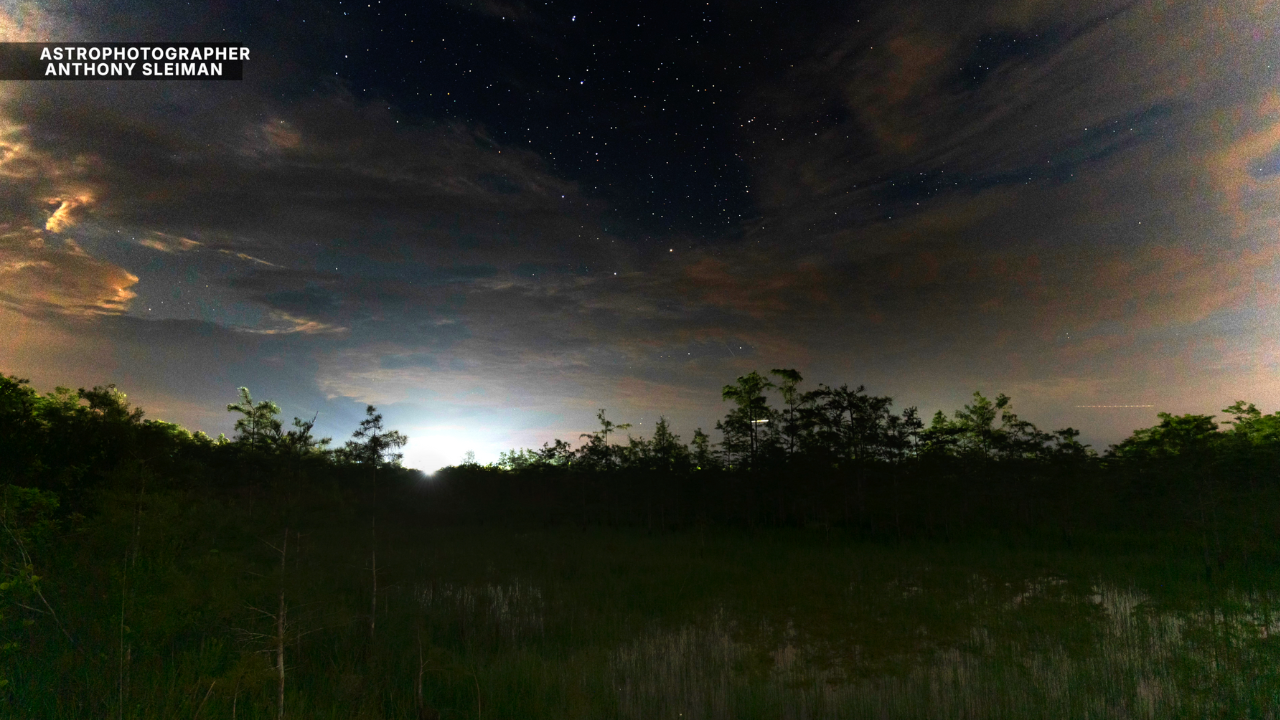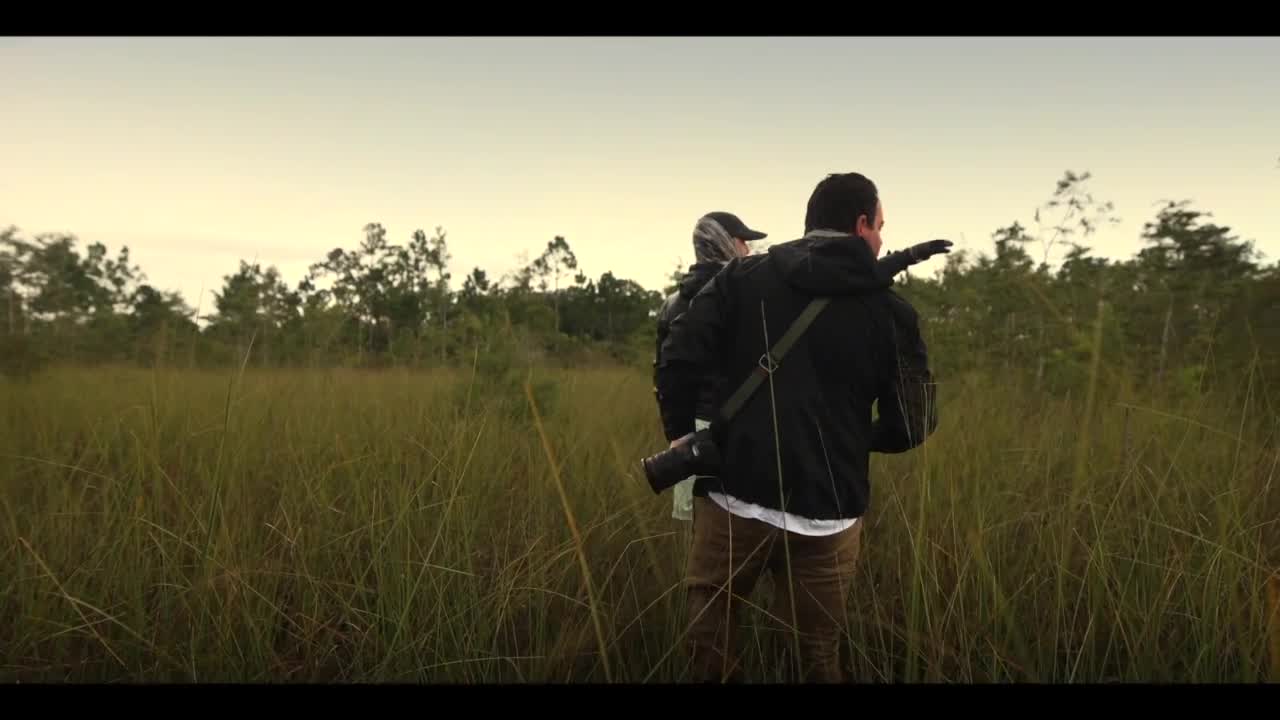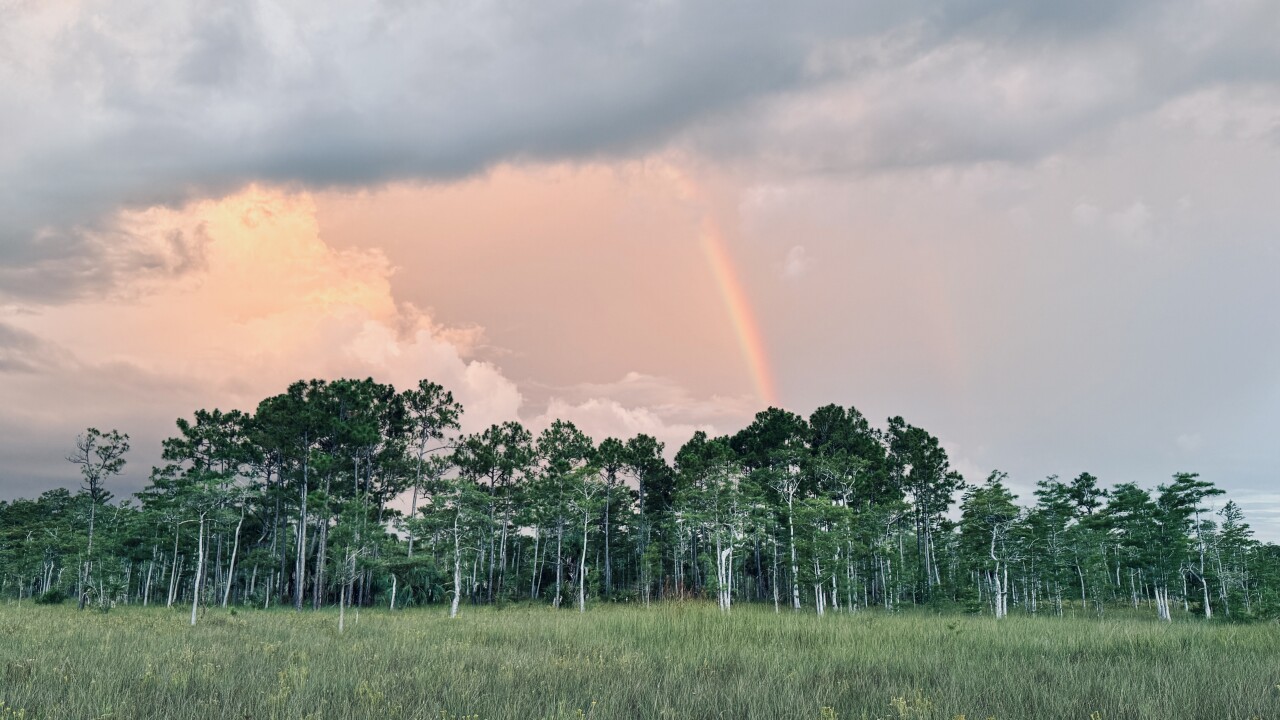EVERGLADES CITY, Fla. — Big Cypress National Preserve encompasses 729,000 acres, showcasing all the beauty Florida has to offer. It is home to dozens of endangered and threatened species, and one of the most diverse ecosystems found in the world.
WATCH: The Beauty of Big Cypress National Preserve: Trekking through the swamp near Florida’s Alligator Alcatraz
Alligator Alcatraz is constructed on the site of what was to become one of the world's largest airports.
Watch full report by Michael Paluska:
After the first runway was completed at the Everglades Jetport, public outcry ultimately halted the construction.
A crucial player in this movement was Friends of the Everglades, an organization founded in 1969 specifically to combat the Jetport project by journalist, author, and environmentalist Marjory Stoneman Douglas.
At sunset, we saw why millions visit the Everglades every year.
"This is unheard of to have a project this damaging rolled out, built in less than two weeks, and not to have any analysis, analysis of the environmental impacts," Eve Samples, Executive Director for the nonprofit Friends of the Everglades, told ABC Action News reporter Michael Paluska. "The reason there's only one runway out there now is because Floridians banded together back in 1969 and 1970 to stop that bigger airport from being built."
The group is now filing suit to stop the detention center.
And citizens, along with members of Native American groups, have continuously protested the facility.
"We're requesting an injunction so that the National Environmental Policy Act can be complied with, and that act also requires alternatives to be evaluated," Samples said. "Why was this put here in the heart of the Everglades, in a place that so many of us hold sacred? It really defies logic. On an ecological level, on an economic level, it's about as inefficient as you can get. Traffic has definitely intensified. It's important to note, too, that telemetry data for the Florida panther shows that Florida Panthers have walked on the property, including on the runway where this prison is now operating."
The environmental impacts of all the generators, waste, light pollution, noise, and other factors are still unknown. But, increased traffic could lead to more wildlife getting hit and killed on Tamiami Trail.
According to the FWC Panther Pulse, vehicle strikes are the number one killer of the Florida panther.
Before the creation of Alligator Alcatraz, you may have driven by the Dade-Collier Training and Transition Airport and never even noticed it.
The construction of the new immigration detention facility, nicknamed Alligator Alcatraz, has plucked the once lonely strip of runway into a now infamous immigration facility.
"You don't need to invest that much in the perimeter. If people get out, there is not much waiting for them other than alligators and pythons; nowhere to go, nowhere to hide," Attorney General James Uthmeier posted in a video on X.
Encountering a Burmese python in the wild is exceedingly rare. In 2022, Paluska tracked four radio-collared male pythons in Big Cypress National Preserve, not far from the detention center. Even with the ability to pinpoint their exact locations, finding them was still tough.
White House Press Secretary Karoline Leavitt described the facility as "isolated and surrounded by dangerous wildlife in unforgiving terrain."
That is true; the terrain can be unforgiving. In the Summer, thunderstorms are always a concern, as well as the thousands upon thousands of swarming and biting mosquitoes.
There are countless alligators in the preserve. However, wildlife biologists, scientists, photographers, and people who live, work, and play in Big Cypress have told Paluska that attacks are rare, if not unheard of, in the wild.
"Any alligator that's not fed is naturally afraid of humans," Sean McHugh, the Share the Landscape Program Manager for fStop Foundation, and a wildlife biologist, told Paluska.
"Aside from mosquitoes, really nothing is out here to get you. It seems like a big, scary place, but it's filled with beauty. A lot of species get a bad reputation out here. And yeah, the fact of the matter is, they're really not. They avoid people. Most of these animals avoid humans, and they just want to be left alone."
The alligators were the least of our concern during our swamp walk. The mosquitoes were relentless, thousands of them biting and swarming as we hiked through the swamp.
The National Park Service addresses concerns regarding alligators on their website, in the frequently asked questions section, for Big Cypress.
"Despite their fearsome appearance, alligators are normally wary of people; unprovoked attacks on humans are rare. Alligators can become habituated to people and may become more aggressive. Prevent this by not feeding alligators; it is illegal to do so within Florida. As with all wild animals, it is necessary to keep a safe distance."
Since 1948, the Florida Fish and Wildlife Conservation Commission has tracked alligator attacks in Florida.
Experts told ABC Action News you are more likely to encounter a gator in an urban environment or suburbs as our human footprint expands.
In 2020, an Estero man saved his dog "Gunner" from a gator attack in his backyard.
According to Gov. Ron DeSantis, the detention facility is situated in the ideal location to prevent a potential escapee from making a break for civilization.
"But, if for some reason someone would be able to get out, where are you going to go? Are you going to dodge alligators for 50 miles? No. It's not going to happen," DeSantis said.
A few miles down the road from Alligator Alcatraz, Paluska met with Clyde Butcher, a Black & White Fine Art Photographer. Butcher is one of the most respected and well-known figures in the preserve, with his Big Cypress Gallery located right off the Tamiami Trail. Butcher disagrees that the swamp and its creatures are doing the work of so-called "detention guards" to stop an escape.
"What is it about the detention center that hurts you the most?" Paluska asked Butcher.
"I think what hurt me the worst was their description of the Everglades. This is a place where the gators and the snakes will keep everybody in all this empty space around here; it's just not worth anything. Just, you know, terrible," Butcher said. "It's a UNESCO World Heritage spot. It's one of the cleanest places in the actual United States, probably the world."
Butcher said that when referencing how rainwater is slowly cleaned as it makes its way into the river of grass and the Floridian aquifer, a water source that provides drinking water to millions of Floridians across South Florida.
Recently, the nonprofit Everglades Foundation released a report highlighting the Everglades' $31.5 billion annual economic impact — the largest of any subtropical wetland system in the continental U.S.
In 2017, Butcher suffered a stroke that left him partially paralyzed. Now, 82, he still treks into the swamp to take photos.
"What else am I going to do?" Butcher said with a laugh.
Butcher also offers the public guided tours of the preserve.
"We take people for swamp walks all year round. And I would say, over the years, we've probably done at least 12,000 people, not one incident," Butcher said. "I spent 40 years trying to convince people this is a beautiful place worth saving," Butcher told Paluska.
"Nature is very resilient, and the Everglades and Big Cypress ecosystems have shown that," McHugh said. "But, each ecosystem kind of has a tipping point somewhere where certain activities affect the actual ecological integrity of that ecosystem, so we just have to give it a chance. We just have to let it do its thing."
Big Cypress is the first national preserve designated as an International Dark Sky Place.
According to the Florida National Parks Association, the preserve "has one of the last protected night skies where visitors can still enjoy the splendor of the Milky Way."
"It's just so magical to be out at night, you know," Anthony Sleiman, a conservation and astrophotographer, told Paluska.
Sleiman utilizes the power of social media to showcase the beauty of space, as seen through his shutter and sense. People can't believe his photos are taken in Florida, let alone the Everglades.
"Because one of the most common questions, I guess, like, 'Is this really Florida?' Yeah! You don't have to travel to Utah to see the Milky Way with the naked eye. You don't have to travel to Iceland to see the Milky Way with the naked eye. You can drive one hour from your house and see the Milky Way with the naked eye."
Sleiman is now worried about the preserve's designation as one of the darkest places to see the stars. He took this photo of light pollution emanating from Alligator Alcatraz.

"You'll see the light pollution coming from Naples from that side, and you'll see the light pollution coming from Miami from that side. So we're like, we are in the middle of a sandwich, right in the middle of the light pollution. And day by day, that light pollution, even though it's far away, is growing and trespassing into the Everglades."
Sleiman said the Everglades helped him through a difficult time in his life.
"I always tell people, like, you can always find light in the darkest places. That's why I always tell people that the Everglades saved my life," Sleiman said.








